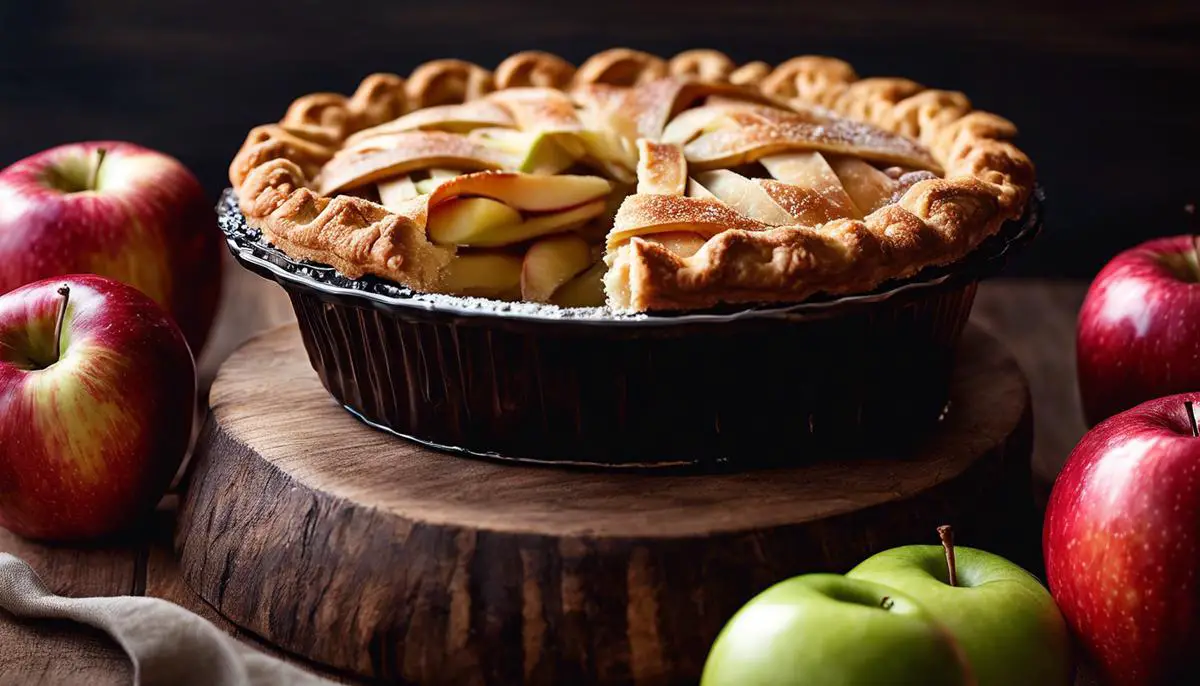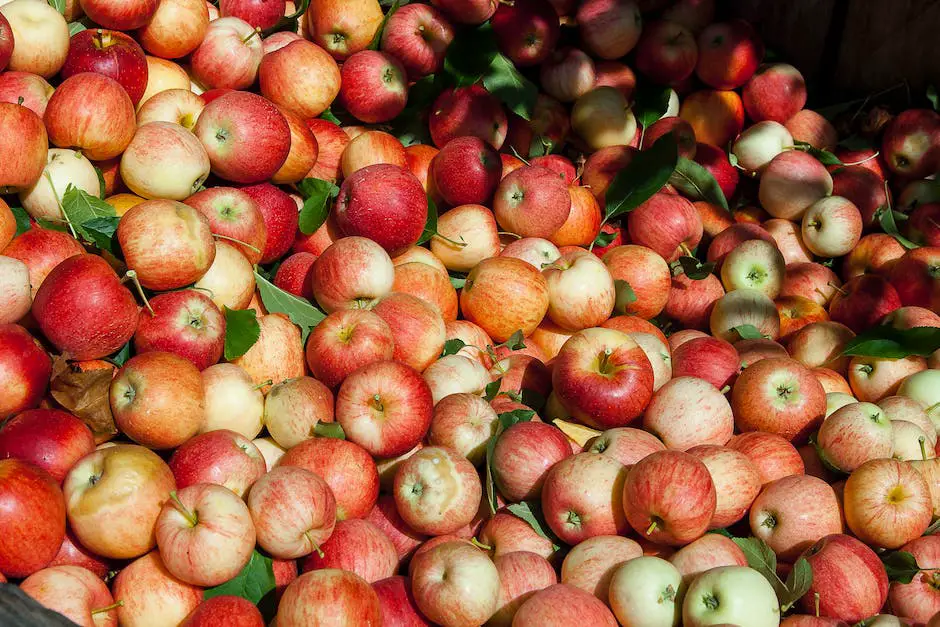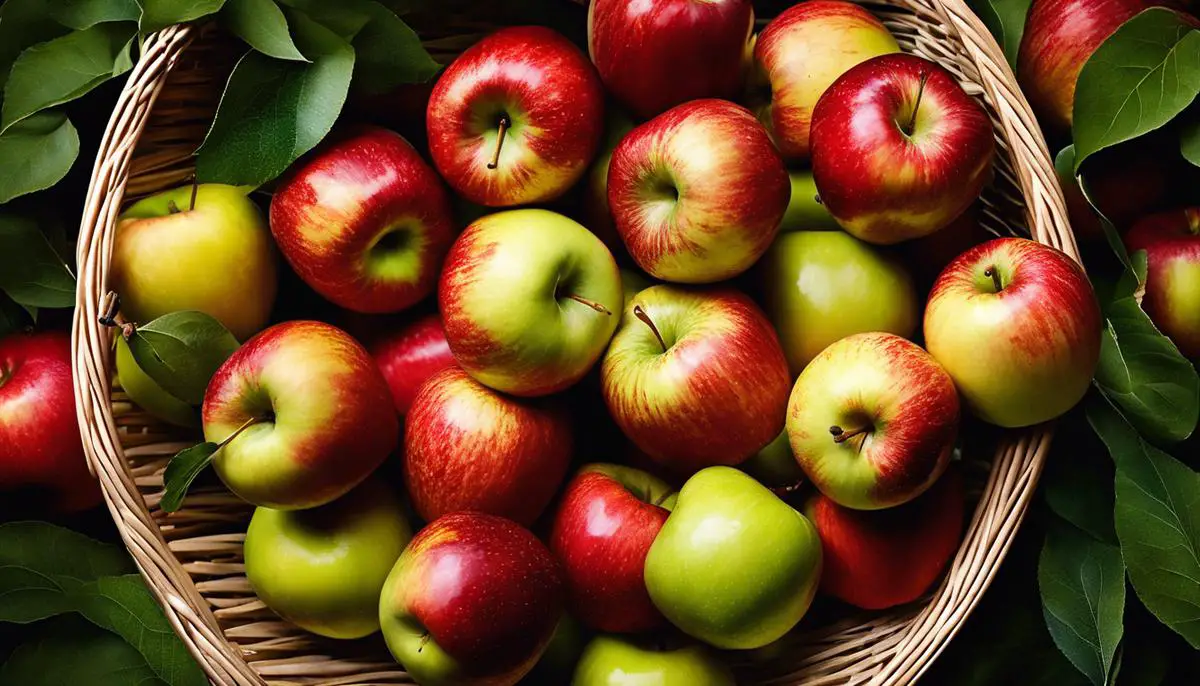There’s a familiar, comforting nostalgia enmeshed in the culinary embrace of a perfect apple pie—the simple elegance of flaky crust, harmoniously embracing a filling that bursts with the tactile dance of sweet and tart nuances. Apple pie, a quintessential American dessert, has its soul tied not only to tradition but, indeed, to the apple itself. In our exploration, we will delve into the intricate dance between diverse apple varieties, carefully sifting through their unique flavors, baking qualities, and seasonality. Additionally, we will unravel the culinary artistry behind the Blend Method in apple pie preparation, and finally, attempt to demystify the age-old concept of ‘Cooking Apples’. Our journey starts here, at the heart of the orchard, where it’s more than just about the apples; it’s about understanding the essence of America’s favorite dessert.
Understanding Apples Different Varieties
Unearthing Delectable Delights: The Best Apples for Your Pie
When it comes to creating the perfect apple pie, it’s no secret that the type of apple you choose plays a vital role. By piecing together the right blend of crispness, sweetness, and tart flavors, food enthusiasts and mortals alike can have a bite of heaven. This guide will highlight the top apple varieties that make luscious apple pies, enhancing your cooking prowess.
Our first contender: Granny Smith Apples. These vibrant green beauties are a time-honored favorite in the realm of apple pie. With their tart and slightly sour taste, Granny Smiths balance out the sweetness typical of pies. They hold onto their firm texture beautifully in the oven, ensuring your apple pie has a Gooble-worthy bite.
A standout variant that’s gaining popularity in the culinary world is the Honeycrisp Apple. Its juicy, crisp nature and balanced sweetness make it perfect for those who prefer a sweeter apple pie. Its natural flavors shine through, enhancing the taste of any recipe it graces.
Next, step into the world of Braeburn Apples. What makes them special? They offer a unique combo of sweet and tart — perfect for an apple pie that’s rich in flavor. Their firm texture is another bonus, ensuring the pie’s filling isn’t overly mushy.
Another incredible variety to consider is Northern Spy Apples. Known for their lovely balance of sweet and tart, they make a delicious center for our stellar pie. They have high juice content, contributing a finger-licking substance to the crust and overall pie experience.
Not to forget the classic Golden Delicious Apple. It’s mellow and sweet, giving a smooth, rich flavor to our baking masterpiece. These apples hold their shape when baked, providing the pie with a perfect texture.
Lastly, meet Cortland Apples. They are similar to McIntosh apples but firmer, allowing them to maintain their form more successfully while baking. With a taste leaning on the tart side, they add a delightful punch to the apple pie filling.
There you have it, a shortlist of some top-notch apple varieties to bring your apple pie to life. Remember, making an apple pie doesn’t have to stick to the script. Feel free to mix and match different apple types for an extravagant blend of flavors.
Cooking and food sharing create bonds and memories that stay with us forever. As Johnson O’Connor said, “Food is the common denominator that brings people together.” So roll up those sleeves, tie on that apron, and dive headfirst into creating an apple pie worth sharing. May your culinary adventures be fruitful and your apple pies be the stuff of legends!

Exploring the Blend Method
Experimenting in the kitchen is part of the fun of being a connoisseur of food, and blending different apple varieties for an apple pie is a splendid way to elevate the standard recipe. Choosing the right apple cultivar is just as important as the skill in baking the pie itself, it’s like choosing the right paint colors to complete an artistic masterpiece.
Granny Smith apples have been a go-to option for many, with their lively tartness balancing the sweetness of the pie filling. Meanwhile, Honeycrisp apples are versatile contenders bringing an ample touch of juicy sweetness. However, why limit ourselves to one type of apple when a blend can usher in a more complex flavor profile, a more interesting taste adventure?
Braeburn apples, with their sweet and tart profile, can complement the tartness of Granny Smith apples and add depth to the pie flavor. Similarly, Northern Spy apples have a beautifully balanced profile that can play off the flavor of both sweet and tart apples. When meticulously mixed and matched, what emerges is a symphony of flavors each apple variant contributes to and that one single cultivar cannot achieve alone.
Golden Delicious apples hold their own with a sweet profile that’s more mellow – an incredible addition to temper the tart varieties. A slice into a pie featuring Golden Delicious reveals a succulent, creamy filling that’s nothing less than heavenly. Breaking away from conventions, let’s not rule out Cortland apples! They introduce an exciting firmness alongside a pleasant tartness, keeping the consistency of the pie as delightful as it tastes.
Venturing into advanced culinary trends, a blend of different apples not only provides an explosion of flavors—it also creates a diverse texture that enhances each bite. Just by varying the apple varieties, every apple pie can be a whole new experience even seasoned apple pie enthusiasts haven’t tried before.
Indeed, the magic in cooking is its boundless nature, providing endless opportunities for innovations that only make our shared meals more meaningful. Combining the right apples takes your pie a level higher and beckons food lovers and amateur chefs alike to venture into unexplored culinary possibilities.
Keep in mind, there’s no right or wrong combination! Be guided by your taste buds, and don’t be afraid of experimenting. In the overlapping realms of food and art, remember that variety is indeed the spice of life. So why not take the leap, mix and match, and share the joy of a uniquely delectable piece of apple pie today?

Discovering the Myth of ‘Cooking Apples’
Enter the vast and diverse world of apples, where even the subtlest variances in flavor and texture can make or break the perfect apple pie. Yet, the question remains, is there something like a ‘cooking apple’, specifically tailor-made for culinary purposes, or is it just a well-spun myth?
First, let us venture into the realm of ‘cooking apples’, a term often used to describe apple varieties that hold their shape well when heated, typically a bit tart and amazingly tasty when stewed, baked, or sautéed. Many consider the likes of Granny Smiths and Cortland as cooking apples due to their firmness that allows them to maintain their shape during baking, preventing a mushy pie.
Still, a cooking apple may not always make the best apple pie. Other essential factors include the apple’s texture and a delicate balance between sweetness and tartness, which varies depending on individual preferences.
Let’s take the Rome Beauty Apple, often heralded as the ‘baker’s buddy.’ Its mild flavor and firm texture stand up well to high heat, making it a favorite for apple pie. But does defining it as a ‘cooking apple’ make it superior to a honeycrisp apple? Not necessarily. A novice pie maker might find the phenomenally sweet and slightly less firm honeycrisp apple easier to work with and yummier.
How about the Idared Apples? With their vibrant red skin, they make for colorful pies, albeit with a tartness that might require extra sweetening. Their firm texture, tartness, and how they hold up under heat qualify them as ‘cooking apples’. But would your palate prefer a milder, sweet apple like the Golden Delicious? This is where personal choice eclipses labeling.
Suppose the question is, do cooking apples exist. In that case, the answer would be a definite yes. Certain apple varieties lend themselves better to cooking due to their firmness and flavor profile. However, whether they make a difference in the taste and texture of your apple pie depends entirely on personal preferences, the dish you’re preparing, and your comfort level in the kitchen.
In an endlessly creative space like the kitchen, rules are meant to be nudged, if not completely broken. So, while there’s certainly value in designating certain apples as ‘cooking apples’, don’t feel constrained. Explore, experiment and trust your taste buds to find the apple (cooking or not) that makes your perfect apple pie.
Because that’s what cooking’s all about, isn’t it? A journey of discovery, enjoyment, and shared pleasures. Whether it’s the tartness of a Granny Smith wrapped in buttery pastry or the surprisingly delightful mix of Braeburn and Golden Delicious, your ideal apple pie is your creation. And just like the seemingly endless variety of apples that grace our markets, the possibilities in your kitchen are truly limitless. At the end of the day, nothing connects us as human beings quite like the universal language of good food. After all, an apple pie is just an apple pie until you add the secret ingredient – a generous dash of love and creativity!

Apple pie is not just a dessert; it is a narrative, a story unfolding with each slice. Our exploration has taken us deep into the orchard’s heart, as we found there’s more to apples than first meets the palate. Navigating through the vibrant tapestry of apple varieties, we understood their unique contributions to the pie-making process, bringing into focus how variety, texture, and flavors play significant roles. The Blend Method, once an elusive art, now stands clarified through its strategy of leveraging complementary apple varieties for superior taste balance. Finally, the myth of ‘Cooking Apples,” although rooted in traditional wisdom, was dissected to uncover the truth behind its intriguing concept. The next time you find yourself savoring a slice of apple pie, let yourself be carried away by this nuanced understanding of what lies beneath the golden, flaky crust, and appreciate each bite with newfound respect for the apple’s remarkable journey.
